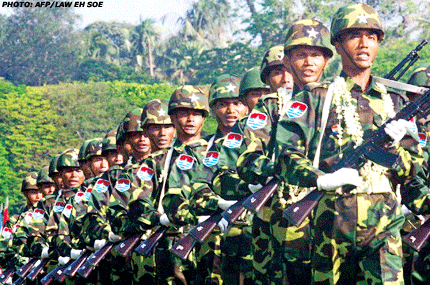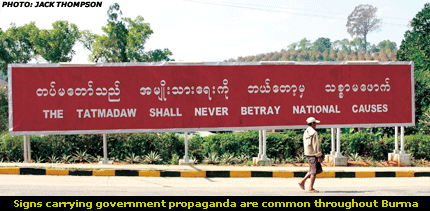From its modest origins in the years following independence from Britain, Burma’s Tatmadaw has pushed in recent years to modernize and expand…and to further secure the power of the country’s ruling generals
Burma’s Tatmadaw (armed forces) has always exhibited a vigorous nationalistic quality. In the early years of the country’s independence from Britain, the government faced strong challenges from armed ethnic and political insurgents. The appeal to nationalism, and an emphasis on preserving the sovereignty of Burma, were perhaps more comprehensible at that time than in the country’s modern age of military despotism, which makes a mockery of the generals’ frequent appeals to national unity and its “shotgun” diplomacy with respect to domestic matters.

Since the failed democratic uprising in 1988 and the present regime’s seizure of power, Burma’s armed forces have steadily increased in size and sophistication, an expansion that has always been justified by appeals to national unity and independence. Put another way, Burma’s military growth has been fueled by appealing to the fears of internal or external disruptions.
This point was made explicitly—and ironically—clear during a speech by Snr-Gen Than Shwe at this year’s Independence Day commemoration in January. “Nowadays, brazen annexation of a nation with the use of force is not as popular as before. However, it is found that some big nations are essaying to interfere in the domestic affairs of others and influence their political, economic, social and cultural traditions.”
The junta has always feared its own people and dealt savagely with any challenge from within. A recent top-secret document obtained by The Irrawaddy reveals just how deeply the regime fears external interference—particularly from the West.
The document records the heightened concerns of top military leaders in Burma over the US invasion of Afghanistan and Iraq in 2003. In it the generals show a marked preoccupation with the US military’s state-of-the-art weaponry, and they assert that the country’s operations in Iraq and Afghanistan have more to do with demonstrating US military might and impressing the world than pacifying rogue nations and combating terrorism.

Army commanders are repeatedly admonished to prepare their troops to be vigilant and to create alternative command posts in the event of an invasion.


